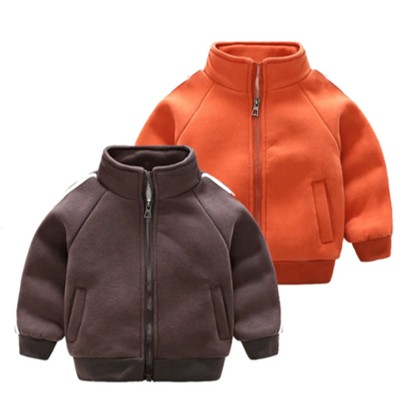Kids Jacket Size Chart
| US Size | Age (years) | Height (in) | Height (cm) | Weight (lbs) | Weight (kg) |
|---|---|---|---|---|---|
| 2T | 2 | 33 - 35 | 83.8 - 88.9 | 24 - 28 | 10.9 - 12.7 |
| 3T | 3 | 35 - 38 | 88.9 - 96.5 | 28.5 - 32 | 12.9 - 14.5 |
| 4T | 4 | 39 - 41 | 99.1 - 104.1 | 33 - 36 | 15.0 - 16.3 |
| 5 | 5 | 42 - 44 | 106.7 - 111.8 | 37 - 41 | 16.8 - 18.6 |
| 6 | 6 | 45 - 47 | 114.3 - 119.4 | 42 - 46 | 19.1 - 20.9 |
| 7 | 7 | 48 - 49 | 121.9 - 124.5 | 47 - 53 | 21.3 - 24.1 |
| 8 | 8 | 50 - 51 | 127.0 - 129.5 | 54 - 58 | 24.5 - 26.3 |
| 9 | 9 | 52 - 53 | 132.1 - 134.6 | 61 - 72 | 27.7 - 32.7 |
| 10 | 10 | 54 - 57 | 137.2 - 144.8 | 73 - 84 | 33.1 - 38.1 |
| 12 | 11 - 12 | 57 - 60 | 144.8 - 152.4 | 85 - 96 | 38.6 - 43.6 |
| 14 | 13 - 14 | 60 - 65 | 152.4 - 165.1 | 97 - 120 | 44.0 - 54.5 |
| Kids Jacket Size Chart Maker : iSizeChart.com | |||||
About Kids Jacket Size Guide Chart
How to choose a well-fitting kids jacket ?
Choosing a well-fitting kids' jacket involves balancing comfort, safety, and room for growth while ensuring proper protection from the weather. Here’s a guide:
1. Prioritize Comfort & Mobility.
Shoulder Fit: Seams should align with the child’s shoulders—not too tight or drooping.
Room for Layers: If buying for winter, ensure enough space for a sweater underneath without restricting movement.
2. Check for Safety & Practical Features.
Zippers & Snaps: Easy-to-use zippers (preferably with a large pull tab) or magnetic snaps for younger kids.
Reflective Elements: Important for visibility in low-light conditions.
3. Consider Growth & Adjustability.
Expandable Features: Some jackets have extendable sleeves or waistbands for growing kids.
Rule of Thumb: Buy one size up for winter coats (to last 1-2 seasons), but avoid excessive bulk.
4. Choose the Right Length.
Older Kids (4+ yrs): Longer coats (thigh-length) for warmth, but ensure they don’t hinder movement.
5. Weather-Appropriate Materials.
Rain: Lightweight, waterproof (e.g., Gore-Tex or PVC-coated).
Spring/Fall: Breathable fleece or softshell jackets.
6. Test the Fit (If Possible).
Squat Test: Ensure the jacket doesn’t bunch up when bending or sitting.
